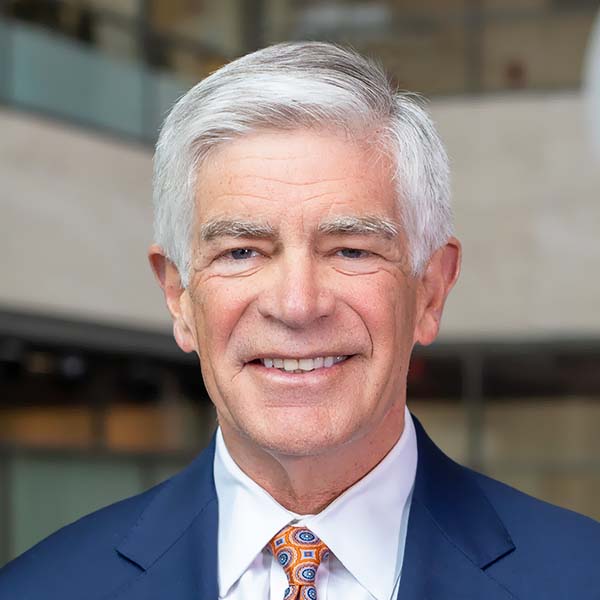Hello and welcome; it’s great to have everyone here.
I’m going to keep my remarks to a minimum today, but I do want to take some time to express what I think is truly one of the most important areas of modern economic research. Which, being just one of the many opinions I’m going to share in the next 10 minutes, is a good place to stop to deliver the standard Fed disclaimer that the views I express today are mine alone and do not necessarily reflect those of anyone else in the Federal Reserve System, including my colleagues on the Federal Open Market Committee (FOMC).
In 2001, one of my predecessors stood on this very stage at the first Consumer Transactions and Credit conference, making the case for the newly launched Payment Cards Center (PCC). Today, I’ll be making the case for that center’s evolution. In some ways, there may as well be a century and a half, rather than a decade and a half, separating our two discussions. In others, some messages from that conference still resonate today.
Reading Anthony Santomero’s remarks with the benefit of 16 years’ perspective is a lesson in the power of research and, given the prescience of his case, something of an exercise in humility.
His view back then was that individuals’ use of consumer credit and payments had been relatively neglected in the research community. That was starting to change with the emergence of ever more complex financial vehicles, particularly relating to the mortgage market. But, by and large, he said we were still a long way from a sophisticated model of household decisions on spending, saving, borrowing, and allocation of assets. He said that “In short, the detailed payoff patterns associated with the debt instruments issued by the agent were entirely too mundane for the theorists’ consideration.”
What a difference a few years would make and how much we all wish those instruments had actually been mundane.
Today, the place of consumer credit and payments, and its attendant research, is markedly different than it was in 2001. But the foundation of the Philadelphia Fed’s continued focus remains the same: The Third District is home to the credit card industry, and we have years of research and expertise dedicated to the study of all things consumer.
So today, I’m incredibly pleased to say that we’re building on that legacy and the work of the Payment Cards Center by launching the Consumer Finance Institute (CFI).
This is an evolution rather than a rebranding or a new initiative. The Payment Cards Center will contribute to the CFI, along with researchers in our Supervision, Regulation, and Credit; Community Development Studies & Education; and Research departments. Our goal is to make the Consumer Finance Institute a primary source within the Federal Reserve System for consumer finance data and research.
I hold the relatively straightforward belief that we should play to our strengths, and this expansion is an expression not only of the importance of consumer finance but the skill and expertise of our staff.
We’ve built on the great work of Bob Hunt, Julia Cheney, and the team in the PCC and created a new consumer finance section in our Economic Research group, led by Satyajit Chatterjee. Chatty will be joined by Wenli Li, and I’d like to take a moment to welcome Igor Livshits and Andrew Hertzberg. Just a plug for our fantastic research team, and a thanks for their work. I’d advise everyone to look out for Andrew’s upcoming article in The Journal of Finance. It’s a great example of how the close study of household behavior — in this case, understanding that households are actually made up of interdependent individuals — gives us valuable, and surprising, insights into consumption behavior. That’s important on a number of levels but particularly from my perspective as a monetary policymaker.
Which leads me to something I find so surprising about Anthony Santomero’s words not too many years ago. The absence of a fully developed field of robust research on consumer credit fundamentally indicates that we didn’t acknowledge that it touches every aspect of the economy. Consumer issues are intertwined and interwoven, inextricable from virtually every economic issue. From entitlement programs to business formation to health care, as Nathan Blascak is going to present later today, there’s nothing in the economy consumer credit doesn’t touch.
Perhaps it’s simply more stark in the wake of the financial crisis and its aftermath, but it seems to me there’s no way to look at the economy without factoring in the work and research you all are doing.
So I’m going to let you get on with that discussion, now that I’ve shamelessly plugged all the great work of the staff here at the Philadelphia Fed. I want to thank the conference organizers, who reviewed 140 submissions this year, and Mike Dotsey, our director of Research, for his role in overseeing the CFI and realigning some of his research team to work in such an important area.
With that, thanks for coming and enjoy the rest of your day.
Note: The views expressed are my own and not necessarily those of the Federal Reserve System or the FOMC.
View the Full Speech
